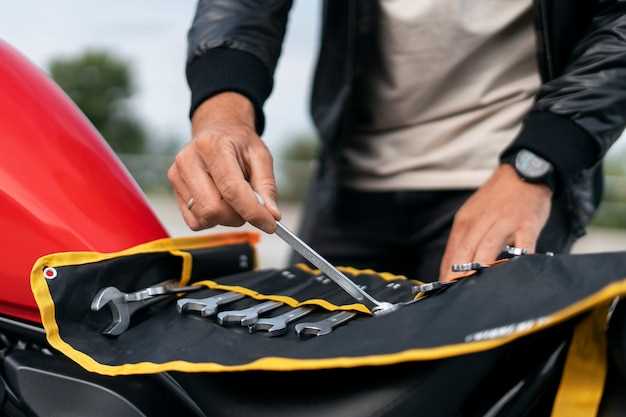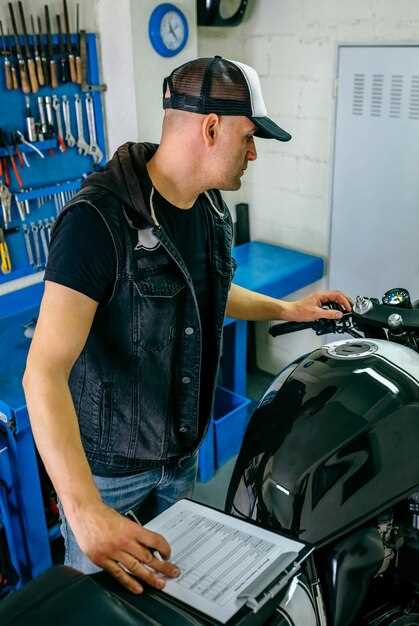
Regular inspection of your motorcycle is essential for ensuring safety and optimal performance on the road. A thorough check-up not only extends the lifespan of your bike but also helps preemptively identify potential issues that could lead to costly repairs or dangerous situations while riding. This guide is designed to equip you with the knowledge necessary to perform a comprehensive inspection of your motorcycle.
Before hitting the road, it’s crucial to familiarize yourself with the key components that require attention during an inspection. Your bike consists of many intricate systems, each playing a vital role in its overall functionality. From the brakes and tires to the lights and fluid levels, understanding what to look for will empower you to maintain your motorcycle in peak condition.
In this guide, we will break down the inspection process into manageable steps, covering both visual checks and hands-on evaluations. By following our structured approach, you can ensure that your journey is as safe and enjoyable as possible, letting you focus on the thrill of the ride rather than worrying about unforeseen issues with your bike.
Step-by-Step Pre-Ride Bike Inspection Checklist
Before hitting the road, performing a thorough bike inspection is crucial for ensuring safety and optimal performance. Follow this checklist systematically to cover all essential aspects of your motorcycle.
1. Tires: Check for proper tire inflation using a gauge. Inspect the tread for wear and look for any cuts or damages. Ensure that the tire pressure meets manufacturer recommendations.
2. Brakes: Test both front and rear brakes for responsiveness. Check the brake fluid level and inspect the brake pads for wear. Ensure there are no leaks in the brake lines.
3. Lights: Verify that all lights are functioning, including headlight, taillight, turn signals, and brake light. Replace any burnt-out bulbs and clean any lens covers that may be obstructing visibility.
4. Fluid Levels: Inspect engine oil, coolant, and brake fluid levels. Top them off as needed, and look for signs of leaks around the engine and under the bike.
5. Chain and Sprockets: Check the chain tension and lubrication. A properly maintained chain contributes to smoother riding. Look for any significant wear on the sprockets.
6. Clutch and Throttle: Test both the clutch and throttle for smooth operation. Ensure that there is no sticking or excessive play. Adjust if necessary to enhance control.
7. Frame and Suspension: Inspect the frame for any signs of cracks or damage. Check the suspension and ensure that it operates correctly, with no unusual noises when compressed.
8. Exhaust System: Examine the exhaust for leaks or damage. A well-sealed exhaust prevents noise issues and improves performance.
9. Personal Protective Gear: Before you start your ride, ensure that you have appropriate gear, including a proper helmet, gloves, jacket, and boots. Safety gear is as vital as inspecting the bike itself.
By adhering to this pre-ride inspection checklist, you can ride with confidence, knowing your motorcycle is ready for the journey ahead.
Maintenance Tips for Ensuring Optimal Performance

To achieve optimal performance from your bike, regular maintenance is key. Start by incorporating a thorough inspection of critical components, including the brakes, tires, and lights, to identify any potential issues before they escalate.
Check your tire pressure frequently and ensure the treads are in good condition, as proper tire maintenance directly affects handling and safety. Replace tires that show signs of excessive wear or damage.
Regularly inspect the brake fluid and pads; low fluid or worn pads can significantly impair braking efficiency. Make it a habit to check the brake system during each inspection cycle.
Engine oil plays a crucial role in performance. Change the oil at recommended intervals and monitor its level to prevent engine wear. This step is vital in maintaining the overall health of your bike.
Chain maintenance is also essential. Keep it clean, lubricated, and adjusted to the correct tension to ensure smooth power delivery and to extend its lifespan.
Don’t neglect the electrical system. Inspect battery connections and wiring for corrosion or damage. Regularly check that all lights, indicators, and the horn are functioning properly.
Finally, consider seasonal maintenance adjustments. Prepare your bike for changes in weather, ensuring that cooling systems and antifreeze are adequate for temperature fluctuations.
Following these maintenance tips during regular inspection will help ensure your motorcycle operates at peak performance and enhances your overall riding experience.
Common Issues to Look For During a Comprehensive Inspection

When performing a motorcycle inspection, several critical areas should be thoroughly examined to ensure optimal performance and safety. Regular maintenance will significantly reduce the risk of encountering major issues on the road.
1. Tire Condition: Check for uneven wear, tread depth, and any signs of damage such as cuts or bulges. Proper tire maintenance is crucial for handling and stability.
2. Brakes: Inspect both front and rear brake pads for wear. Look for leaks in the brake lines and check the fluid level. Functional brakes are essential for safety.
3. Fluids: Examine engine oil, coolant, brake fluid, and transmission fluid levels. Contaminated or low fluids can lead to engine failure or overheating.
4. Battery: Check the battery for corrosion on terminals and ensure it is securely mounted. Measure the voltage to ascertain its charge state and lifespan.
5. Chain and Sprockets: Inspect the chain for proper tension, lubrication, and wear. Check the sprockets for any signs of elongation or damage, as they are crucial for power transfer.
6. Lights and Signals: Ensure all lights, including headlights, taillights, and turn signals, are operational. This aspect of maintenance is vital for visibility and legal compliance.
7. Suspension: Evaluate the front forks and rear shocks for leaks or unusual stiffness. A well-maintained suspension system enhances ride comfort and stability.
8. Cables: Inspect throttle, clutch, and brake cables for fraying or kinking. Properly functioning cables are vital for smooth operation and control.
9. Frame and Body: Look for cracks, rust, or any signs of impact on the frame. A structurally sound motorcycle is essential for rider safety.
By systematically addressing these common issues during your comprehensive motorcycle inspection, you can enhance your vehicle’s reliability and performance, while ensuring a safer riding experience.




